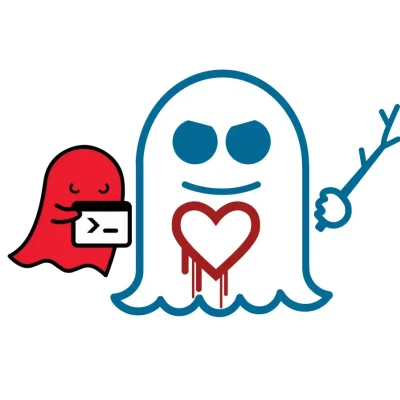
Linux powers the world, from servers to IoT devices, but its open-source foundation isn’t without risks. Attackers often exploit vulnerabilities in components like the Common Unix Printing System (CUPS) to execute remote commands, inject malware, and infiltrate networks.
For businesses, these exploits can mean costly disruptions and data breaches. The solution? Tools like Static Application Security Testing (SAST), regular updates, and strong security practices. In this post, we’ll show you how to protect your systems without sacrificing the power and flexibility of Linux.
Critical Linux CUPS Vulnerabilities (CVE-2024-47177) Exposed
There are many entry points for hackers on Linux systems. The open-source community fears several critical vulnerabilities within the Common Unix Printing System of Linux. Hackers exploit these vulnerabilities via remote command execution once flaws are chained together and users separately launch print jobs. These vulnerabilities – a quartet of them – include the following:
- CVE-2024-47177
- CVE-2024-47176
- CVE-2024-47175
- CVE-2024-47076
Fraudsters attack by replacing IPP URLs on a specified printer with a Malware version, which gives them command and control over the system. These Linux vulnerabilities were initially assigned a 9.9 score, but researchers have tempered their initial fears compared to Heartbleed and Log4j of past Linux vulnerabilities.
The bugs were unearthed in September 2024 by a security consultant named Simone Margaritelli (moniker @evilsocket). While these security flaws impact all Red Hat Enterprise Linux variants, the default configurations are safe. This is one of many known Linux vulnerabilities presented by flawed open-source systems.
How can Static Application Security Testing (SAST) Help?
Since Linux runs on open-source software, it is innately vulnerable to malicious code. Fortunately, SAST delivers on expectations with security and speed to improve the developer experience. Estimates suggest that the best static application security testing tools can be up to 90% faster with 80% lower false positives. With SAST systems, organizations can efficiently scan for vulnerabilities in mission-critical applications, identifying and addressing risks early in the development process.
Among the benefits of SAST all the following:
- Scan changed code for quicker fixing
- Accurate results with prioritized findings
- Easily fix vulnerable code to ensure secure applications
- Unbeatable security at ultra-fast speed on mission-critical apps
Recent Linux security vulnerabilities include a Silent Intruder Exploit, a Residual Risk Flaw, a Performance Events Vulnerability, a Linux Kernel Ext4 File System Vulnerability, and a Firmware Infiltration Exploit. Regular updates and patches to software code can prevent many of these vulnerabilities. Vulnerability assessment is crucial in identifying risks before they escalate.
Mandatory access control systems, including SELinux and AppArmor, can bolster security by restricting the capabilities of certain programs. Businesses benefit from regular vulnerability assessments to maintain system security. Significantly, the NSA (National Security Agency) created SELinux. Other safeguards available to Linux users include firewalls, an intrusion detection system, access controls, security audits, vulnerability, scanning, etc.
Endpoint protection, such as Monitoring Tools and next-generation antivirus software, is imperative. Runtime application self-protection (RASP) can further protect Linux applications' security.
Linux is Widely Regarded as Stable and Secure 
Linux is widely regarded as a stable, secure, and safe operating system. This is mainly due to its open-source nature. This means that a large community of users, contributors, and experts can rapidly remediate any vulnerabilities in the code; this is done with a top-quality source code vulnerability scanner. Yet, this does not eliminate threats that affect Linux software. The operating system remains susceptible to cyber threats if it isn’t correctly maintained, configured, and monitored.
Owing to the public accessibility of the source code, Linux can face significant threats from bad actors. In other words, they can inject malicious source code into the codebase. Fortunately, Linux's open-source nature is also its saving grace—the community routinely mitigates risks that crop up from time to time.
Among others, Linux users can stay safe and secure by following generally accepted practices in the IT security industry, notably:
- Only use reputable sources for Linux software. Trusted sources are best for many reasons. Remember that bad actors can intentionally introduce vulnerabilities into the source code.
- Always use robust security practices, procedures, and frameworks. Strong passwords, managed permissions, and expertly configured network settings are sacrosanct. And even when 24/7 monitoring is underway, bugs can still appear.
- Keep the operating system software up-to-date at all times. Whenever security patches are available, they should be downloaded and installed.
It is worth reiterating that regular security audits (SAs) are essential for detecting any outdated software. The vulnerability scanning resources make the process easier through automation. By comparing databases of known weaknesses against the scanned details, it’s much easier to find vulnerabilities through vulnerability assessment. Organizations should prioritize vulnerability scanning for comprehensive security.
By integrating advanced tools like SAST, an intrusion detection system, and adopting rigorous security protocols, Linux users can mitigate risks, too. Open-source collaboration helps to address any glaring weaknesses as quickly as possible. This reinforces the OS's trust while addressing the cybersecurity landscape's dynamic challenges.













